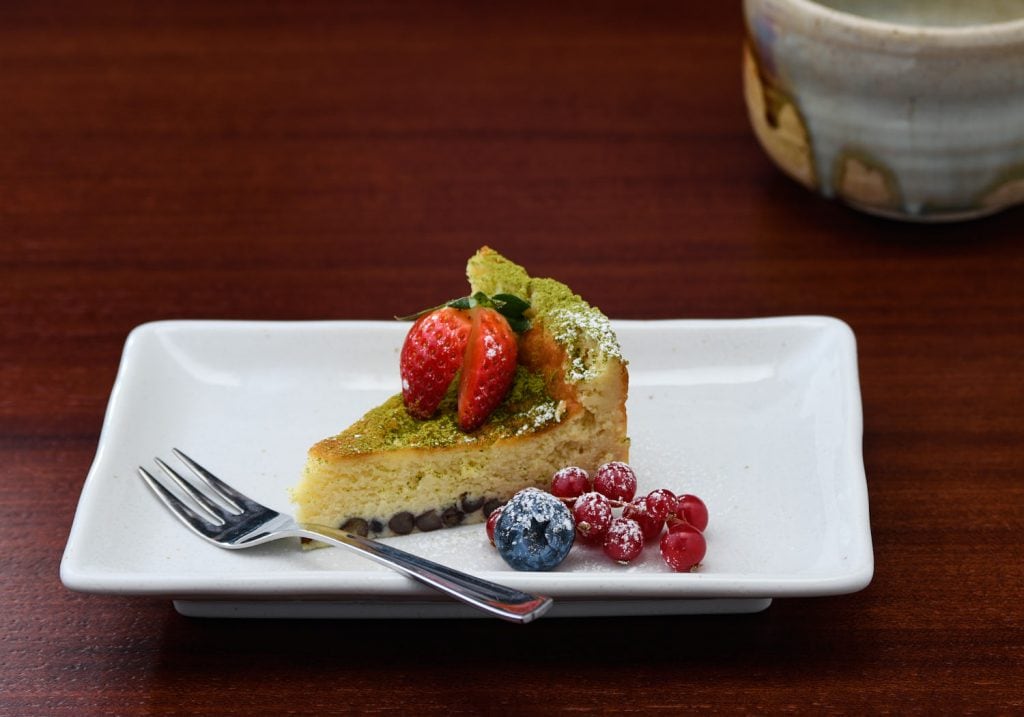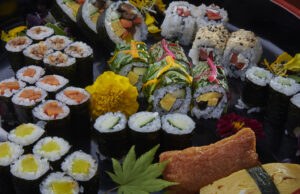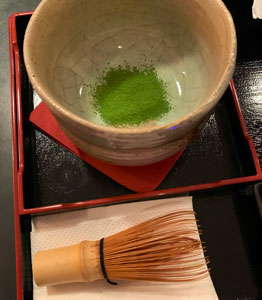Our Azuki Chocolate Cheesecake, which has been a recurring dessert on the daily menu in our delivery and pickup service for a few weeks now, has been extremely well received by our customers. Have you tried it yet?
Sweets from beans
Beans are eaten in all kinds of forms around the world - but as far as we know, sweet dishes made from beans are really only eaten in Asia. Recently, you can find more and more azuki beans in grocery stores in Munich. What was first known only to Asian connoisseurs is now gaining more and more fans: the pleasantly mild sweetness of azuki beans
Of course, this is also a question of habit: for those who have always eaten sweet German, French or Austrian pastries and desserts, what is sold everywhere as a sweet in Japan may come as a surprise at first.
"If you used to eat steamed noodles at the Auer Dult as a child, filled with jams, and you try a Japanese Daifuku, which looks like a small steamed noodle, but is then filled with red bean paste, your face can freeze!" our boss told us about his first visits to Japan in the 90s. Japanese sweets are at first completely different from the sugar & fat constructions we are (or were) used to in the West.
But for Japanese, azuki bean is a main ingredient of sweets and Japanese treats would not be the same without it. There is even a Azuki Museum.
Why the Japanese love azuki beans
The number of sweets made from azuki in Japan is endless, but some of the most famous are:
"Daifuku" (大福), which are made by wrapping "anko" (あんこ, red bean paste) in a "mochi" (餅, rice cake)
"Manju"(饅頭) made by wrapping anko in a light flour dough and steaming it
"Yōkan" (羊羹), produced by hardening it with agar-agar,
"Azuki-Monaka" (小豆最中) by coating anko with a very thin, cookie-like mass of rice flour.
There are also "anpan" filled with bread and azuki ice cream.
Azuki as the basis of many sweets in Japan
The number of sweets made from azuki in Japan is endless, but some of the most famous are:
- "Daifuku" (大福), which are made by wrapping "anko" (あんこ, red bean paste) in a "mochi" (餅, rice cake)
- "Manju"(饅頭) made by wrapping anko in a light flour dough and steaming it
- "Yōkan" (羊羹), prepared by hardening it with agar-agar,
- "Azuki-Monaka" (小豆最中) by coating anko with a very thin, cookie-like mass of rice flour.
- There are also "Anpan" filled with bread and azuki ice cream.
Azuki as a healthy alternative to sugar for desserts
How did people actually come up with the idea of using azuki beans for sweet dishes?
Of course - typically Japanese - people in Japan also like to do research on the azuki bean. And there are red rice awareness associations in Japan (赤飯文化啓発協会) or even for the Anko culture (日本あんこ協会).
Dr. Jun Kato, a leading azuki researcher, hypothesizes that azuki beans contain a sweet-smelling ingredient called Maltol would contain. This would not be found in other legumes and, due to the evaporation produced during cooking, people might have gotten the idea that azuki beans and sweets basically go well together.
Azuki beans are also - like all beans - rich in fiber, vitamins, zinc and iron and contain three times as much polyphenols as red wine, which can act against fatigue and prevent diseases And so you can find azuki beans also with us more and more in health food stores or in organic stores.
Use of Azuki Bean in Azuki Cheesecake in sansaro
In Sansaro, we wanted to introduce you to the taste of azuki bean, which has been loved by Japanese people for a long time and has a high nutritional value. Therefore, we have come up with various ideas to offer you special Japanese sweets.
No sugar is added to the azuki beans, they are soaked overnight in water and then gently cooked in a steamer to release their flavor. Our Azuki cheesecake is then baked slowly at medium temperature with rich sweet Belgian white chocolate and smooth mascarpone. Carefully prepared in this way, the delicately sweet bean tastes good even to those who have been used to beans only salty.
We hope you enjoy the interplay between the creamy body and the grainy texture of the azuki. Japanese cuisine is always good for surprises. We hope you enjoy these new culinary experiences - and look forward to your feedback.



